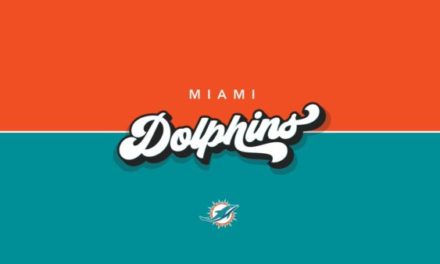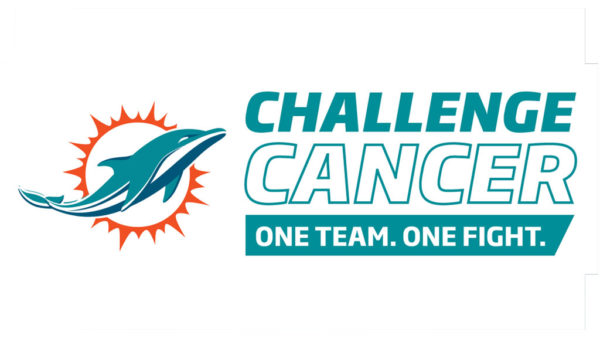
The Miami Dolphins have been stuck in quarterback hell since the great Dan Marino retired in 2000. For someone like me, born in 1999, quarterback hell is all I’ve known as a Dolphins fan.
Sure, Chad Pennington, Chad Henne, and Ryan Tannehill had some moments, but their time in Miami was either too short or largely underwhelming for various reasons. They were not “The Guy.” The quarterback that gave the Dolphins a shot no matter the opponent or game situation has eluded them.
In 2020, Miami drafted Alabama quarterback Tua Tagovailoa with the fifth overall pick hoping he would end the organization’s dreadful search for a bonafide elite signal-caller and become “The Guy.” Tagovailoa was, after all, the franchise’s highest quarterback selection since 1967 when they took Rick Norton at number two overall, and Bob Griese at number four overall.
Now, after two rollercoaster seasons, it’s once again time to answer the question that has plagued Miami for more than 20 years, but the answer, as it pertains to Tagovailoa, is unclear.
Since coming to Miami, I’m fully aware of all the pitfalls Tagovailoa has dealt with. Bad coaching, underwhelming skill position players, and multiple traffic cones masquerading as starting offensive lineman have made his job incredibly difficult at times.
That doesn’t even cover the off-field drama caused by Ryan Fitzpatrick or the team’s idiotic pursuit of Deshaun Watson.
To properly evaluate Tagovailoa, that context needs to be considered, and it will be in this piece. However, for a quarterback to truly be a franchise quarterback, an absolute, without doubt, elite quarterback, they have to overcome the team’s shortcomings. Excuses can’t be made forever.
That is the standard I’ll be holding Tagovailoa’s play to. He was the fifth pick in the draft at the league’s most important position; he should be held to the highest possible standard.
[pickup_prop id=”20766″]
Accuracy and how Tagovailoa can do more:
When examining Tagovailoa’s strengths, the first one that comes to mind is accuracy. He was accurate at Alabama, and I think it is fair to say he’s been accurate in the NFL.
Tagovailoa completed 67.8 percent of his passes in 2021, which was good for seventh in the NFL. Raw completion percentage is an inherently flawed stat though, but Completion Percentage Over Expected usually gives a better indication of accuracy.
Well, Tagovailoa checks that box too. The film backs up Tagovailoa as an accurate passer. He’s got a snappy release and is typically giving his receivers a chance to make a play on the ball. He ranked 13th in CPOE this past season.
While Tagovailoa is a generally accurate quarterback, he’s not generating enough explosive plays down the field with his accuracy. The popular argument for why Tagovailoa doesn’t push the ball down the field is because of his poor offensive line. While that is likely a contributing factor, it’s hardly a good excuse.
The other argument is that he doesn’t have enough arm strength. While I wouldn’t say Tagovailoa has a cannon, we’ve seen quarterbacks with similar arm talent produce plenty of explosive plays.
Joe Burrow finished the NFL season as one of the NFL’s best downfield passers despite dealing with a lot of the same offensive line and arm talent limitations Tagovailoa had.
On passes thrown with more than 25 air yards, Burrow was fourth in attempts with 45 and fifth in completions with 16. Tagovailoa ranked 33rd in attempts with 14 and tied for 21st in completions with eight, according to Sports Info Solutions.
If you need even more proof. Burrow’s average depth of target was 8.5 yards, while Tagavoiloa’s was 7.2.
Hopefully, getting someone like Tyreek Hill will help in this area because where Tagovailoa’s touchdowns are coming from is possibly even more concerning. Of the sixteen touchdown passes he threw last season, just two were longer than 10 yards.
His average touchdown pass traveled nine yards last season. If you remove the 65-yard pass to Mack Hollins against the Jets — a very clear outlier — that average drops to 8.6 yards.
Tagovailoa and Miami were simply incapable of creating big plays resulting in touchdowns. That is a huge problem in a league relying more and more on those plays each year. The methodical approach to offense is just too hard to execute game in and game out in today’s NFL.
Tagovailoa’s short game accuracy lends itself to the methodical approach. If he wants to launch himself higher in the quarterback higher hierarchy, he’ll need to step away from that approach a little bit. So might say it’s an unfair expectation, but it’s reality.
Tagovailoa has enough ability to improve in this area. He just needs to shift his mindset. He’s so used to being a safe passer, who lets his defense win games, but he needs to cut it loose in 2022 if he wants to be “The Guy.”
The Double-Edged Sword of the Run Pass Option:
One of Tagovailoa’s biggest strengths has always been his aptitude for working run-pass option concepts, even going back to his days at Alabama. NFL Network’s Daniel Jeremiah pegged Tagovailoa as the best RPO thrower he was ever seen back in 2019.
That skill set has largely translated to the NFL as the RPO became a cornerstone of Miami’s offense during the 2021 season.
Several of the clips above are less creative RPO slants, which Tagovailoa ran plenty of. According to SIS, he finished with 52 slant throws, second only to Matt Ryan with 58, and was third in air yards on slant routes with 217.
RPOs are a very useful tool in any quarterback’s toolbox. They can serve as an efficient way to pick up easy yards, get the ball into your best playmakers’ hands, and protect a bad offensive line.
Miami should continue using RPOs, and there is nothing wrong with them being a strong suit of Tagovailoa’s game. It’s an excellent box to have checked.
This issue for Tagovailoa — and the Dolphins at large for the past two seasons— is his toolbox is a little too reliant on the RPO.
Tagovailoa led the NFL in passing yards on RPO concepts with 573 and finished inside the top three in total RPO attempts with 74, which accounted for a whopping 19.1 percent of his overall attempts this season.
Patrick Mahomes and Josh Allen both ranked near the top of the NFL in RPO yards and attempts, but they were significantly less reliant on it. Mahomes attempted 78 RPO throws this season, which only accounted for 11.9 percent of his overall attempts, and Allen’s 63 RPO attempts only accounted for 9.7 of his overall attempts this season.
Not only is Tagovailoa relying on the RPO too much, but it’s integral to Miami pushing the ball down the field. Tagovailoa finished first in intended air yards with 406 and second in actual air yards with 195 when throwing RPOs, according to SIS.
Because the RPO accounts for so much of what Tagovailoa does well, he and the team struggle to move the ball when defenses take it away. Tagovailoa ranked 30th in the NFL in total yards without RPOs, according to SIS.
He finished behind Zach Wilson, who played in 13 games, and Daniel Jones, who played in 11 games, in that category. That’s not exactly encouraging. Don’t get it confused; I believe Tagovailoa is better than both Wilson and Jones right now, but if you strip away the easiest concept an offense can run, it’s a lot closer than it should be.
Allen and Mahomes are using the RPO as it’s supposed to be used. It’s a helpful tool, but it can’t be your go-to play. Blame Tagovailoa, the offensive line, or the offensive coordinators for the overreliance on the RPO — it doesn’t matter. It’s not sustainable or even effective to rely on this concept the way Tagovailoa and the Dolphins have since he entered the league.
Thankfully, with the advent of a player like Hill and a coach with Mike McDaniel’s offensive pedigree, I imagine this will be less of an issue in 2022.
Pocket Presence is the path to the next level:
So, Tagovailoa is generally accurate and works RPOs effectively but isn’t pushing the ball down the field and is too reliant on those same RPOs, but there’s one more category to cover.
Tagovailoa’s pocket presence is great. He’s exceptional at moving in the pocket to avoid sacks. He was sacked just 20 times last season despite being pressured an obnoxious 131 times.
If you watched Miami play at all in 2021, then you know Tagovailoa’s low sack number was a product of prudent pocket movement, but just in case you didn’t, here’s a chart to drive my assertion home.
Latest attempt and dividing QB prevention credit between QB and pass blocking.
This time I used the specific survival rates for each QB's snaps, not the team's entire season. I also normalized the numbers with assume each QB had 500 dropbacks. Made some other smaller tweaks too pic.twitter.com/MPJ9tmcU0i
— Kevin Cole (@KevinColePFF) February 19, 2022
And if graphs aren’t your thing, here’s some video evidence.
Having pocket presence is an essential trait to being an above-average NFL quarterback. All of the best ones are elite at avoiding pressure and making the defense pay for missing them in the pocket.
While Tagovailoa has done some nice things like avoiding sacks and converting third downs while being pressured, like the ones above, he needs to become a little more dynamic on these plays.
Tagovailoa is great at avoiding sacks, and that’s a great starting place, but his numbers throwing the football while under pressure have to improve. He threw just three touchdowns and eight interceptions — tied for the most in the NFL with Matthew Stafford — when pressured while completing just 46 percent of his passes.
The old adage was that every quarterback was bad when pressured, but this generation is flipping the script. Consistently, the league’s best quarterbacks have performed well under pressure in recent seasons.
For instance, Allen and Mahomes threw for 16 and 11 touchdowns, respectively, while under pressure, according to SIS.
Even Stafford, who threw a lot of interceptions while under pressure, generated ten passing touchdowns in such situations — seven more than Tagovailoa.
Tagovailoa actually has the hard part figured out. He can escape pressure, slide around in the pocket, and get the Dolphins out of bad plays. If he wants to jolt himself into the upper echelon of quarterback play, he’ll have to do a better job making teams pay with explosive plays in those outside of structure situations.
The Eye Test:
So far, I’ve done my best to blend stats with film. However, I firmly believe the film is the best way to evaluate a player. All the numbers I’ve included are helpful and matter, but they shouldn’t supersede good ole’ fashion tape grinding.
I’ve watched every throw Tagovailoa has made at least once, going back to his days with the Crimson Tide. For this article, I decided to rewatch two of his better games from 2021 and two of his less-than-stellar ones from 2021.
This way, I’m not just basing my opinion off of four games because I’ve seen them all, but I’m still giving myself a refresher into the best and worst of what Tagovailoa can offer.
The Good Stuff:
Here are some of the best Tagovailoa plays in the games against the Jaguars, Falcons, Titans, and Saints. It’s a lot of the stuff in the above sections. Plenty of snaps with great pocket movement, precise accuracy, RPO prowess, and general touch.
However, two things popped out that wasn’t covered already. First was touch on throws layered into the middle of the field. Tagovailoa is quite good at layering throws into zone windows in the middle of the field, especially in the 12-20 yard range.
This is going to come in handy for the 2022 season, given McDaniel’s offense will likely feature a ton of those deep crossers.
The other stand-out trait was when Tagovailoa throws the ball deep; he’s pretty accurate with it. He understands leverage really well — when to throw back shoulder and when to lead his target upfield. His arm can limit him in this respect, but generally, he has enough arm talent to sneak by thanks to his touch and anticipation, even on deeper route concepts.
The Bad Stuff:
In the spirit of equality, some not-so-good plays were also littered across those contests worth highlighting. Again, it was mostly the limitations already discussed, like arm strength, reliance on RPOs, and too few explosive plays.
There was a surprise in this category too. Tagovailoa’s interceptions were pretty much all on him — a bunch was overthrown pretty badly, especially in the middle of the field. There was one against the Titans that Mike Gesicki bobbled towards the end of the game, but outside of that, they were on Tagovailoa.
Several were at really bad times too. The two against the Falcons came in key moments. The first was in the red zone, wiping points off the board, and the other was the play after a Xavien Howard interception.
For a player as smart and as calculated as Tagovailoa is, it’s weird to see him have so many moments where things get away from him at inopportune times. He bounced back in the Falcons game, driving Miami down the field for the go-ahead touchdown, but they lost the game by two, and he cost them more points than that throughout the contest.
The Conclusion:
This was one of the last plays I watched for this article, and I think it sums up who Tagovailoa is as a quarterback right now. This deep ball to Mack Hollins is a good throw. It’s a good read. It’s located well and has good touch.
However, it’s also a little short, forcing Hollins to hesitate for a second and come back to the ball. A quarterback with better arm strength probably leads Hollins on this throw, and in turn, Hollins might score a touchdown.
It’s good but not quite good enough yet.
Tagovailoa has plenty of strengths, and the Miami Dolphins can win football games with him at quarterback, but right now, he has clear limitations independent of bad coaching, playmakers, and blockers.
I started this article saying I was going to firmly declare whether Tagovailoa is “The Guy.” Frankly, he’s not right now. However, it would be absolutely foolish to close the book on him becoming an above-average NFL quarterback.
It’s very odd to me that Tagovailoa is such a polarizing player. It’s abundantly apparent what he’s good at and what he’s not when watching his film. His film is average, and that is okay for a quarterback just more than 20 games into his career.
The improvements around him in personnel and coaching will undoubtedly help, but I think general confidence and more snaps will be the most beneficial. I think Tagovailoa has the potential to land somewhere in the 10-15 range of NFL quarterbacks. Somewhere in the Kirk Cousins and Ryan Tannehill tier.
I’m sure that will come as an insult for some, but I do mean that as a compliment. Those guys are getting to and winning playoff games, something Miami hasn’t done since the year 2000. Tagovailoa doing that is a success, in my book.
Beyond that, I think Tagovailoa will struggle to reach the upper echelon of quarterbacks. He just quite doesn’t have the arm talent or athletic ability to match the new crop of signal-callers taking over the NFL.
If this was the mid-2000s where pocket passers were dominating the NFL, I think there would be a different conversation to be had, but today’s NFL is just different.
Right now, Tagovailoa is an average quarterback. He has a path to become better than that and win plenty of games in Miami. I’m actually a firm believer he will have a good 2022 season — there is no reason for him not to. However, there needs to be some realism blended into that. He has limitations to his game, and they will probably always be there.
Simply put, 2022 is a do-or-die season for Tagovailoa. He’s not quite “The Guy” yet, but I think he can get there.














On this point:
He finished behind Zach Wilson, who played in 13 games, and Daniel Jones, who played in 11 games, in that category. That’s not exactly encouraging.
Tua only played in 13 games. And since he only attempted 388 passes, and 74 of those were apparently RPO, that means only 314 attempts were not RPO. The RPO numbers for Wilson and Jones are not provided, but they attempted 383 and 361 passes, which probably means they each attempted more non-RPO passes than Tua. In both cases their yards per attempt was lower than Tua and yards per completion was higher. People talk a lot about Tua’s stats, but I never see anyone talking about how he few attempts he had. Compare his attempts in college and the NFL with Herbert and you’ll see why he is behind him right now.